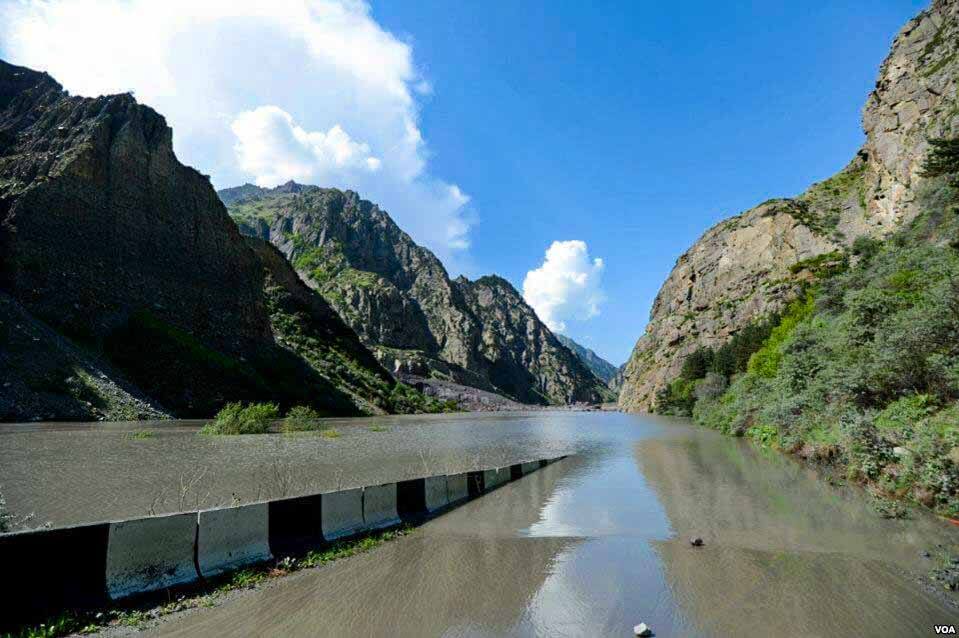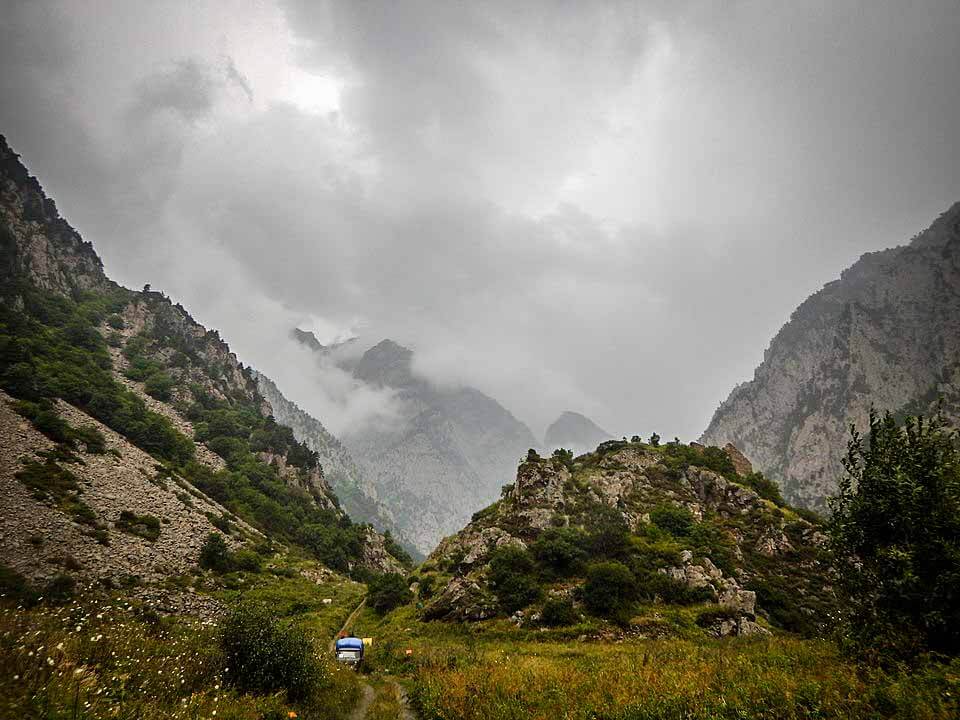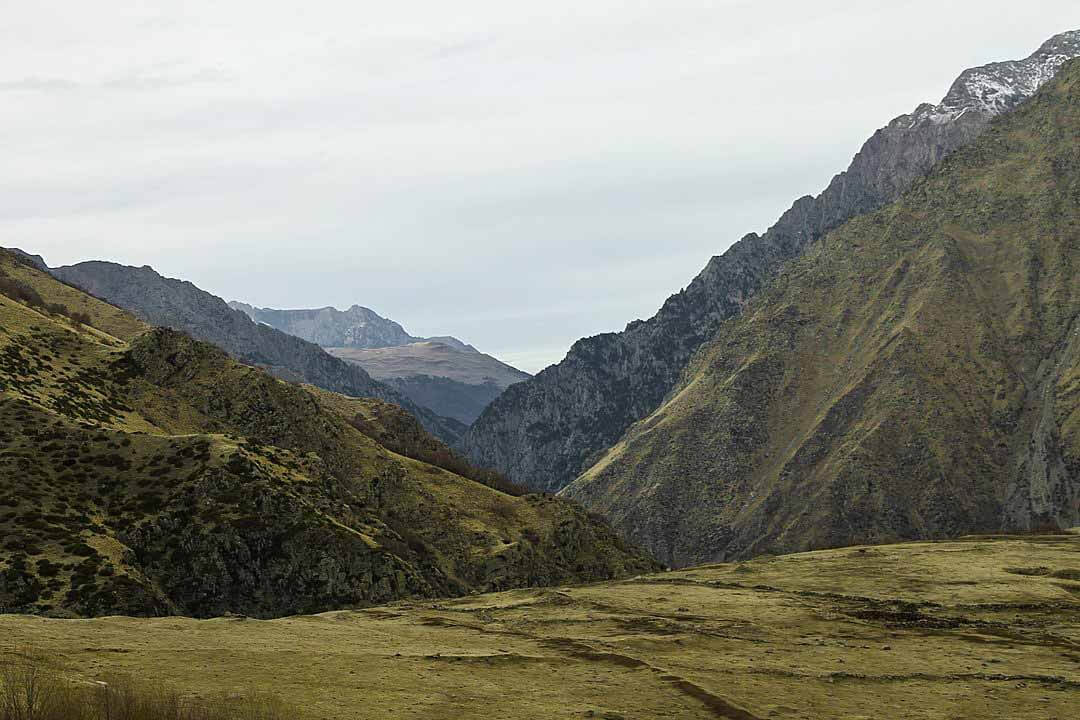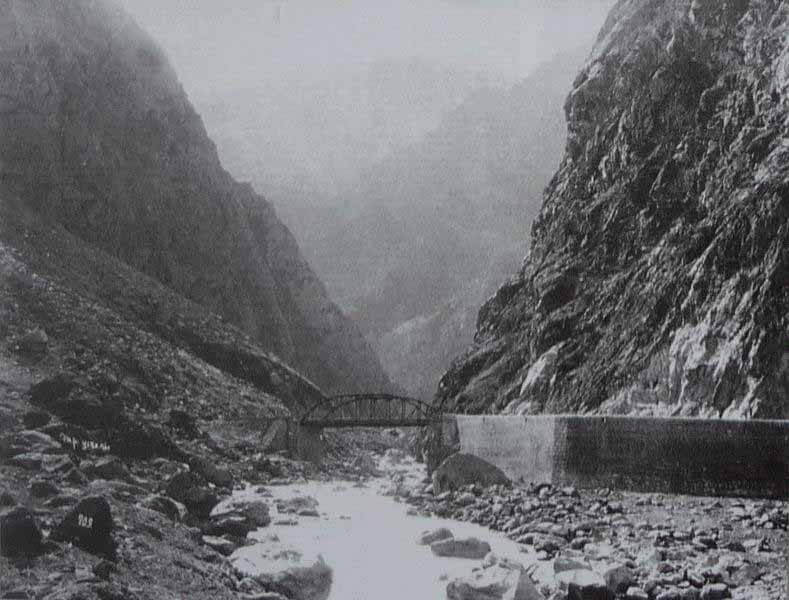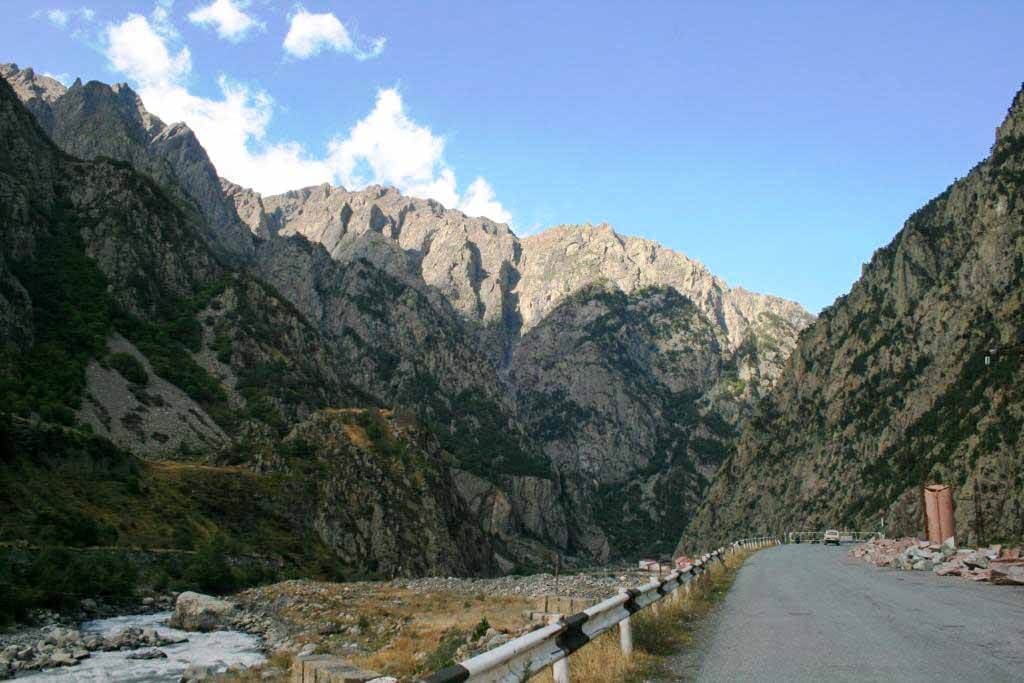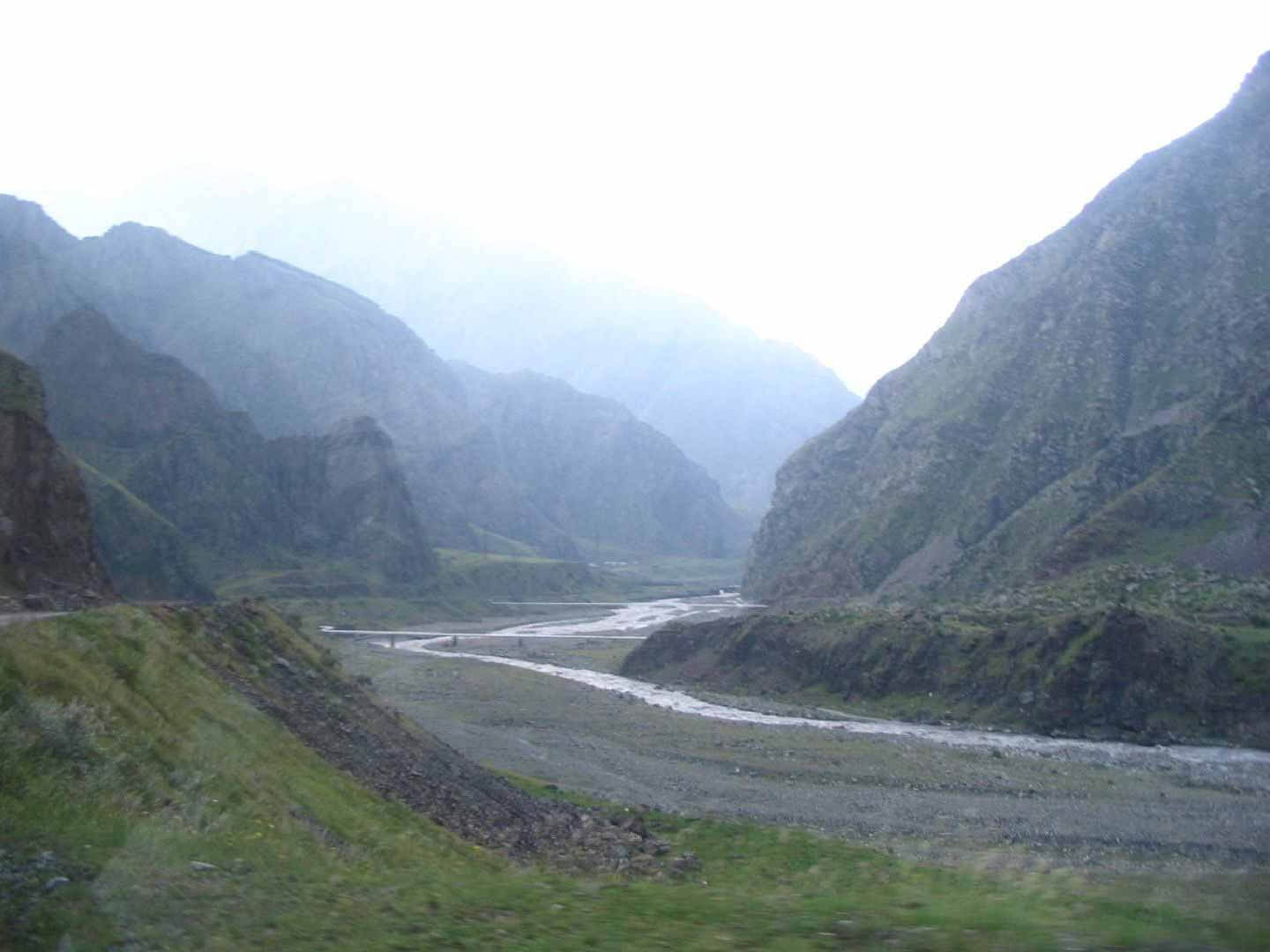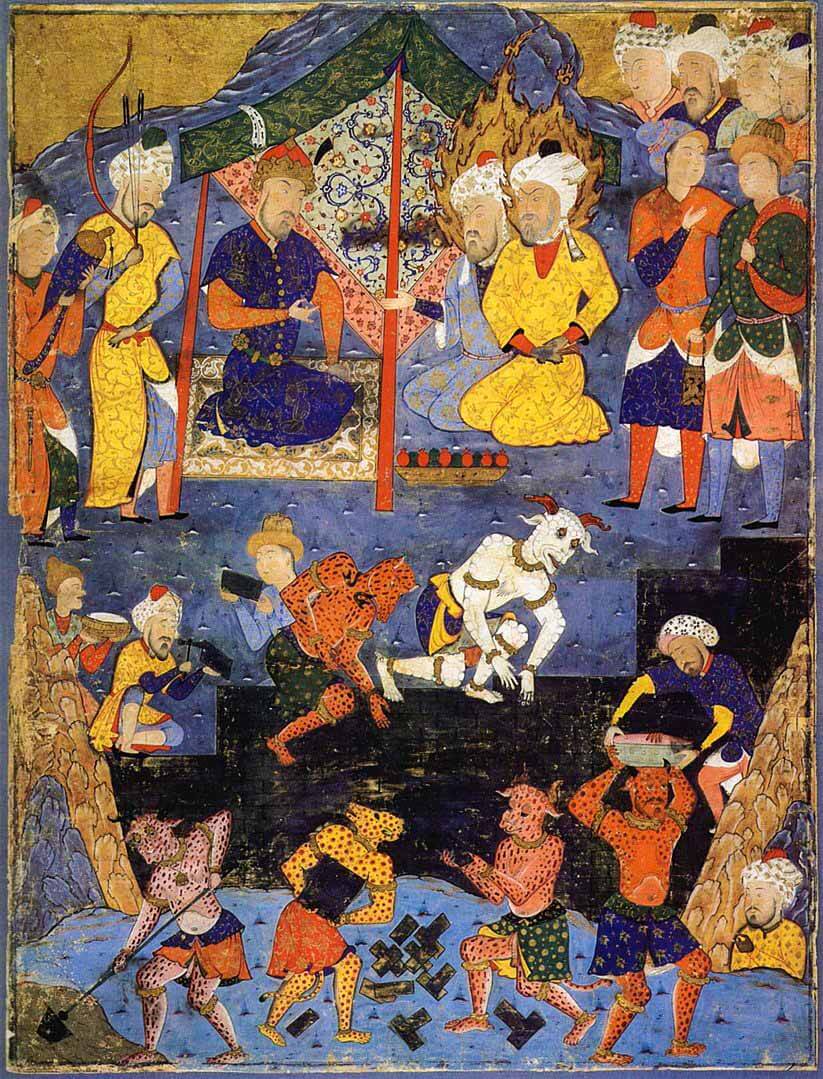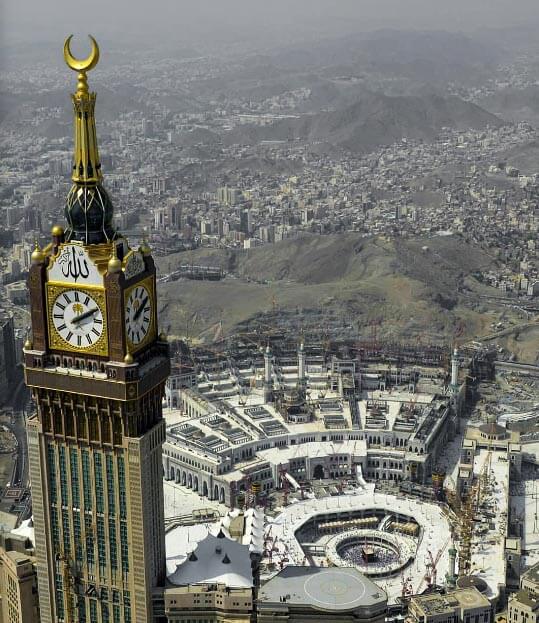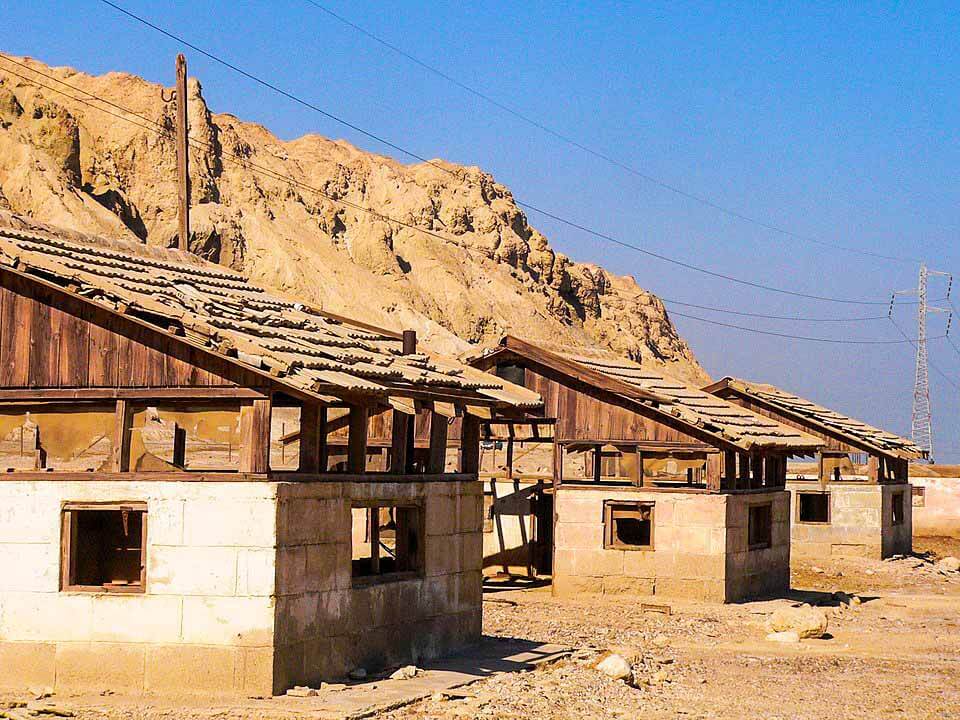Kazbegi, Oni, Georgia
Coordinates: 42.745435, 44.625317
Quranic narration of Hz. Dhu al-Qarnayn عليه اسلام
And they ask you, [O Muhammad ﷺ], about Dhul-Qarnayn. Say, “I will recite to you about him a report.”
Indeed, We established him upon the earth, and We gave him from everything a way [i.e., means].
So he followed a way
Until, when he reached the setting of the sun [i.e., the west], he found it [as if] setting in a body of dark water,1 and he found near it a people. We [i.e., Allah] said, “O Dhul-Qarnayn, either you punish [them] or else adopt among them [a way of] goodness.”
He said, “As for one who wrongs, we will punish him. Then he will be returned to his Lord, and He will punish him with a terrible punishment [i.e., Hellfire].
But as for one who believes and does righteousness, he will have a reward of the best [i.e., Paradise], and we [i.e., Dhul-Qarnayn] will speak to him from our command with ease.”
Then he followed a way
Until, when he came to the rising of the sun [i.e., the east], he found it rising on a people for whom We had not made against it any shield.
Thus.1 And We had encompassed [all] that he had in knowledge.
Then he followed a way.
Until, when he reached [a pass] between two mountains, he found beside them a people who could hardly understand [his] speech.
They said, “O Dhul-Qarnayn, indeed Gog and Magog1 are [great] corrupters in the land. So may we assign for you an expenditure that you might make between us and them a barrier?”
He said, “That in which my Lord has established me is better [than what you offer], but assist me with strength [i.e., manpower]; I will make between you and them a dam.
Bring me bars of iron” – until, when he had leveled [them] between the two mountain walls, he said, “Blow [with bellows],” until when he had made it [like] fire, he said, “Bring me, that I may pour over it molten copper.”
So they [i.e., Yajuj and Majuj] were unable to pass over it, nor were they able [to effect] in it any penetration.
[Dhul-Qarnayn] said, “This is a mercy from my Lord; but when the promise of my Lord1 comes [i.e., approaches], He will make it level, and ever is the promise of my Lord true.”
Quran:18-83,98
The Wall of Hz. Dhu al-Qarnayn عليه اسلام
There are many places in world that people have suggested could be the the original site of Wall built by Hz. Dhu al-Qarnayn عليه اسلام. Some say it was Great wall of China, some say it was Iron Gate in Uzbekistan, some say it to be the wall created by Alexander in Derbent (Dagestan)
By the most prominent site which can be applied to all the research and proof that are given in Quran and hadiths is the Darial Gorge
The road Dhul Qarnain followed between the mountains is called the Darial pass, located in Darial Gorge where the wall was built.
It is at the east base of Mount Kazbek, between vertical walls of rock 1800 m/5900 ft in height, the pass today traverses this mountain range at altitudes of up to 3,000 metres (9,800 ft), it is marked below.
Generally Islamic historians like Mas’iidi, Istakhri, Hamawi and others – identify the Wall located in Darial gorge as the Wall of Hz. Dhu al-Qarnayn عليه اسلام.
But a famous Islamic scholar Yaqut al-Hamawi (d.1229) known for his encyclopaedic books wrote in his work the Dictionary of Countries that the wall of Darial Pass was “constructed with molten copper.”
Darial Pass
The Darial Pass was historically important as one of only two traditional crossings of the Caucasus mountain range, the other being the Derbent Pass near the caspian sea, which was fortified by around 150 BC, it’s worth noting that the level of the Caspian was formerly higher and that the lowering of the water level opened an invasion route around the mountain that had to be fortified.
If we look at the map of the descendants of Hz. Nuh عليه اسلام, Majuj are North east above the Caspian sea and Yajuj are North west above the black sea, they used to travel south through this pass between the huge mountains into present day Georgia to harass the local people, eventually as one of their empires fell another replaced it.
Jewish historian wrote that that Alexander the Great built iron gates at an unspecified pass which some Latin and Greek authors identified with Darial. It is not true
The exact location of the wall is not knows as it is a long pass and nothing of the wall is present today.
Historians mistook Alexander as Hz. Dhu al-Qarnayn عليه اسلام
Beyond the work of muslim historians and scholars there are other sources pointing to this location. The accounts of local people lasted well past the 7th century Ad and the advent of Islam when many of the legends where claimed to be the achievements of Alexander the Great, which many considered to be Hz. Dhu al-Qarnayn عليه اسلام the famous traveler.
Alexander, which no doubt these same accounts existed in his time, himself consciously mimicked Dhul Qarnain, likewise traveling from the east to the west on a famous Journey, but he never reached the west coast of Africa and didn’t go past India to the east.
Alexander the great was confused with Dhul Qarnain because historians took most of the older accounts of the Monotheistic ruler and adopted them to Alexanders figure, even before the advent of Islam. But they predated Alexander by over a thousand years, local Historians adopted them to Him more closely after Islam’s advent in order to raise his profile and many where sincerely certain it was him, including muslim scholars.
But Alexander was not monotheistic, built pagan temples, never met Hz. Ibrahim عليه اسلام
who lived long before him or went on Hajj, what is important is the accounts they connected with Him, because in them is the traditional location of the wall of Hz. Dhu al-Qarnayn عليه اسلام.
Alexander also Conquered Persia making it part of his empire until it freed itself from under his successors in 247BC, but the Derbent gate on the Caspian sea dates back to about 150BC at the earliest, while he reigned from 332-323BC, so they can’t be attributed to him or his empire, historically they are known as Persian in origin.
Hz. Dhu al-Qarnayn عليه اسلام in literature of Some Sufi Saints and Theologians
The Persian Sunni mystic and theologian Al-Ghazali wrote of how Hz. Dhu al-Qarnayn عليه اسلام came across a people who had no possessions but dug graves at the doors of their houses; their king explained that they did this because the only certainty in life is death. Ghazali’s version later made its way into the Thousand and One Nights.
The Sufi poet Hz. Rumi رحمة الله عليه, perhaps the most famous of medieval Persian poets, described Dhu al-Qarnayn’s eastern journey.
The hero ascends Mount Qof, the “mother” of all other mountains, which is made of emerald and forms a ring encircling the entire Earth with veins under every land.
Hz. Dhu al-Qarnayn’s عليه اسلام request the mountain explains the origin of earthquakes: when Allah wills, the mountain causes one of its veins to throb, and thus an earthquake results. Elsewhere on the great mountain Hz. Dhu al-Qarnayn عليه اسلام meets Hz. Israfil عليه اسلام (the archangel Raphael), standing ready to blow the trumpet on the Day of Judgement.
Know This
The exact location of the wall is not knows as it is a long pass and nothing of the wall is present today.


